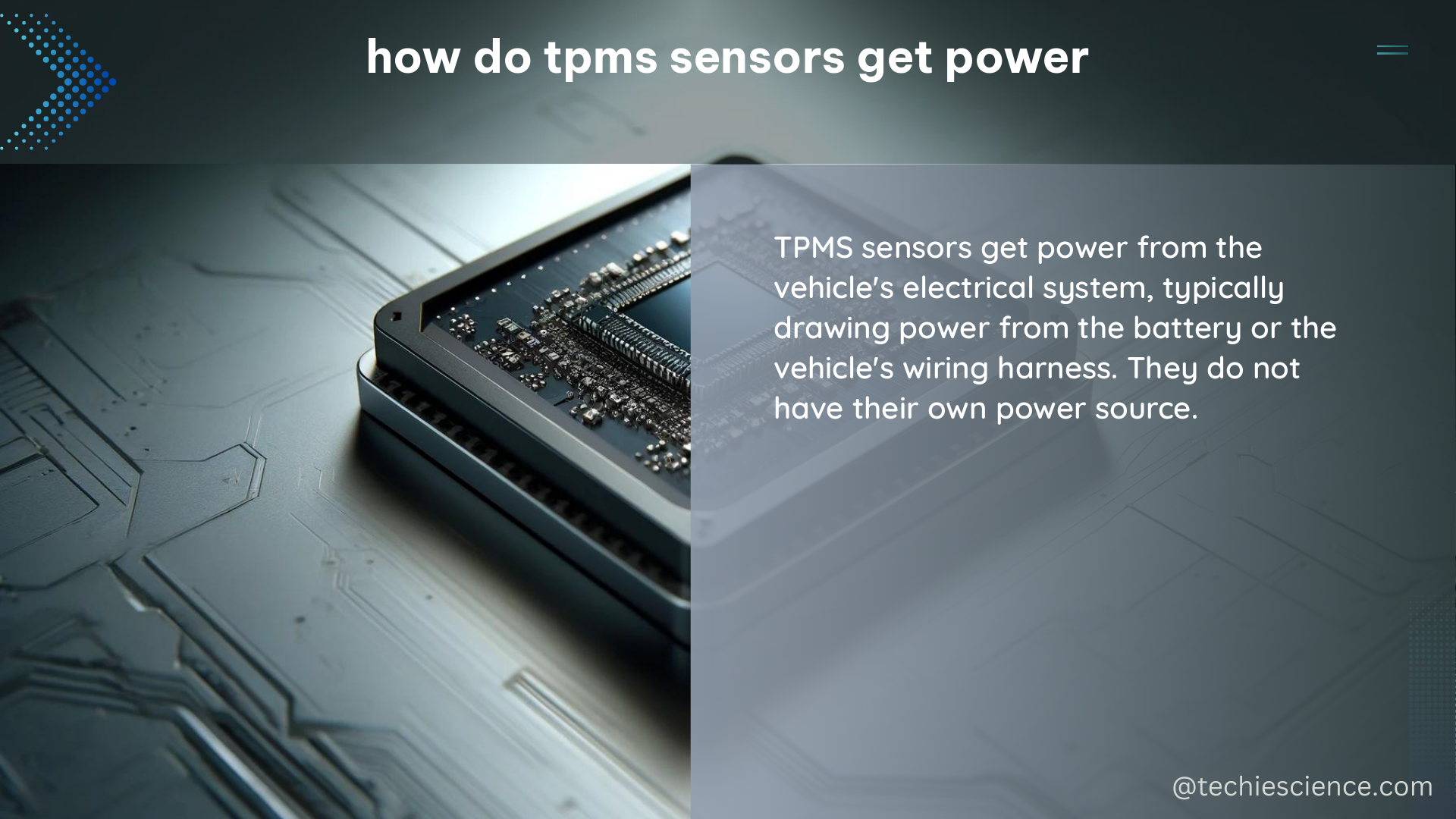TPMS (Tire Pressure Monitoring System) sensors are battery-powered devices that monitor the tire pressure and temperature in real-time. They are typically located on the valve stem or wheel rim inside the tire assembly and transmit the collected data wirelessly to the vehicle’s on-board computer system, which analyzes and interprets the information.
TPMS Sensor Power Source
TPMS sensors are powered by small, long-lasting lithium-ion batteries that are sealed inside the sensor housing. These batteries typically have a lifespan of 5 to 12 years or up to 100,000 miles, depending on driving conditions and usage patterns.
Battery Capacity and Voltage
- The batteries used in TPMS sensors typically have a capacity of 1000 to 3000 mAh.
- The nominal voltage of these batteries is around 3 volts, with a range of 2.5 to 3.6 volts.
Battery Chemistry
The most common battery chemistry used in TPMS sensors is lithium-ion (Li-ion) or lithium-metal (Li-metal). These battery types offer the following advantages:
- High energy density: Li-ion and Li-metal batteries can store a large amount of energy in a small package, making them well-suited for the compact TPMS sensor design.
- Long lifespan: These battery chemistries have a relatively long cycle life, allowing TPMS sensors to operate for several years before needing replacement.
- Low self-discharge: Li-ion and Li-metal batteries have a low self-discharge rate, ensuring the sensor’s battery retains its charge even when the vehicle is not in use.
Battery Replacement
Since the TPMS sensor batteries are sealed inside the sensor housing, the entire sensor assembly must be replaced when the battery reaches the end of its lifespan. This is typically done during routine tire maintenance or when the TPMS warning light indicates a sensor issue.
TPMS Sensor Power Management

To conserve battery life, TPMS sensors are designed to operate in a low-power mode and only transmit data when necessary.
Transmission Intervals
TPMS sensors typically transmit data at the following intervals:
- When the vehicle is in motion: The sensors transmit data every 60 to 90 seconds to provide real-time tire pressure and temperature information.
- When the vehicle is stationary: The sensors enter a low-power mode and only transmit data every 5 to 10 minutes to monitor for any pressure changes.
Sensor Activation
TPMS sensors do not continuously transmit data. Instead, they are “excited” or “pinged” by a 125 MHz signal from a TPMS tool or antennas on the vehicle, which triggers the sensor to transmit its ID number, tire pressure, and temperature.
Power-Saving Features
TPMS sensors incorporate various power-saving features to extend their battery life, such as:
- Adaptive transmission: The sensors adjust their transmission frequency based on vehicle speed and driving conditions to minimize unnecessary data transmissions.
- Motion detection: The sensors use accelerometers or other motion-sensing technologies to detect when the vehicle is in motion and only transmit data when necessary.
- Sleep mode: When the vehicle is stationary for an extended period, the sensors enter a low-power sleep mode to conserve battery.
Future Developments in TPMS Power
As technology advances, new developments in TPMS power management are emerging, such as:
- Energy Harvesting: Some TPMS sensors are being designed to harvest energy from the tire’s motion or temperature changes, reducing the reliance on battery power.
- Wireless Charging: Researchers are exploring the possibility of wirelessly charging TPMS sensors, allowing them to be replenished without the need for physical battery replacement.
- Bluetooth Low Energy (BLE): The use of BLE protocols in TPMS sensors can improve interference management and enable more efficient data transmission, potentially extending battery life.
By understanding the power sources, management techniques, and future developments in TPMS sensors, vehicle owners and technicians can better maintain and troubleshoot these critical safety systems.
References:
– How TPMS Works: Tire Pressure Monitoring System Explained
– TPMS Sensor Signals: What They Mean and How to Diagnose Them
– Design of a Low-Power Tire Pressure Monitoring System Based on System-on-Chip
– Lithium-Ion Battery Capacity and Voltage Characteristics
– TPMS Battery Replacement: When and How to Replace TPMS Sensors

The lambdageeks.com Core SME Team is a group of experienced subject matter experts from diverse scientific and technical fields including Physics, Chemistry, Technology,Electronics & Electrical Engineering, Automotive, Mechanical Engineering. Our team collaborates to create high-quality, well-researched articles on a wide range of science and technology topics for the lambdageeks.com website.
All Our Senior SME are having more than 7 Years of experience in the respective fields . They are either Working Industry Professionals or assocaited With different Universities. Refer Our Authors Page to get to know About our Core SMEs.